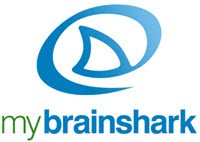As instructors, our gender doesn’t matter to students when it comes to their evaluations of us…does it? Students care about our knowledge of course content, about the passion that we bring to the process of teaching, about that ‘x-factor’ that teaching greats are able to bring to their classrooms…don’t they? While I have no doubt that students do care about the proven qualities that contribute to great instruction it would seem they also, to a certain extent, evaluate an instructor’s ‘x-factor’ in the context of xx or xy chromosomes. In studies dating back decades, we can see evidence of a gender bias with regard to student evaluations of instructors.
The reported ways that this gender bias might make its way into course evaluations have been numerous in published research studies. They include everything from the expected gender of an instructor in the discipline in which they teach, to the degree to which an instructor’s personality and teaching style fits with traditional gender stereotypes (e.g. students may expect female professors to be ‘friendly’ and ‘competent’ in their teaching role, but may be fine with male instructors simply being ‘competent’) (Kierstead, D’Agostino & Dill, 1988). Even the gender of the student completing an evaluation has been reported to influence the rating that they might give to an instructor (e.g. some older studies have suggested that female students rate female professors more highly than male professors) (Bachen, McLoughlin & Garcia, 1999; Basow, 1995).
Recently, the popular millennial-targeted news site BuzzFeed jumped on this gendered bandwagon though its promotion of a 2015 study examining instructor evaluations on the infamous website ratemyprof.com. BuzzFeed’s article is based on research conducted by Dr. Benjamin Schmidt (Northeastern University) which examined the number of times various adjectives were used to describe male and female professors across 25 academic disciplines among the 14 million or so entries available on ratemyprof.com. Interestingly, Schmidt appears to have unearthed a gender bias with regard to the use of certain adjectives and has created a fascinating interactive chart that allows readers to investigate this suspected bias for themselves. My interactions with the chart unearthed that the term ‘unfair’ can be found to occur more commonly in evaluations of female instructors in 23 of 25 disciplines, while the term ‘brilliant’ appears to occur more commonly in evaluations of male instructors in 24 of 25 evaluations. I found that ‘funny’ was used far more frequently in male instructor evaluations, while the term ‘boring’ produced decidedly mixed results.
So why should we care about gender bias in instructor evaluations? One important reason might be the negative impact such bias has been shown to have on instructors (in particular, female instructors). Sadly, poor teaching evaluations have been found to increase burnout rates among female faculty (Lackritz, 2004) and may interact with other demographic factors such as age or race to further complicate student perceptions of female instructors (Arbuckle & Williams, 2003; Basow, 1998). Given the weight that student evaluations can carry in the assessment of faculty early in their careers, it seems prudent that universities examine the process of evaluating their instructors.
While the complete removal of gender bias from evaluations might be a challenging goal, several strategies have been suggested to mitigate some of its impact (Laube, Masson, Sprague & Ferber, 2007). For starters, universities can exclude any student evaluations that contain sexually or physically explicit comments. Additionally, increased emphasis can be placed on teaching portfolios and peer evaluations to allow for a more comprehensive evaluation of an instructor’s activities. Finally, changes could be made to the questions contained in the teaching evaluations themselves to reduce the room available for gender bias. For instance, global measurements (e.g. _____ was an effective teacher) could be replaced with questions that directly address specific traits related to teaching quality and effectiveness (e.g. ____created a classroom environment that made me feel motivated to learn)
These types of changes, though small, are a step in the right direction towards reducing gender bias in the ways students assess their instructors. Perhaps once we have this started, we can work on the whole red hot ‘chili’ ratings on ratemyprof.com (sigh).
References:
Arbuckle, J., Williams, B. D. (2003). Students’ perceptions of expressiveness: Age and gender effects on teacher evaluations. Sex Roles,49(9-10), 507-516.
Bachen, C. M., McLoughlin, M. M., Garcia, S. S. (1999). Assessing the role of gender in college students’ evaluations of faculty. Communication Education, 48(3), 193-210.
Basow, S. A. (1995). Student evaluations of college professors: When gender matters. Journal of Educational Psychology, 87(4), 656.
Basow, S. A. (1998). Student evaluations: The role of gender bias and teaching styles.
Kierstead, D., D’Agostino, P., Dill, H. (1988). Sex role stereotyping of college professors: Bias in students’ ratings of instructors. Journal of Educational Psychology, 80(3), 342.
Lackritz, J. R. (2004). Exploring burnout among university faculty: incidence, performance, and demographic issues. Teaching and Teacher Education, 20(7), 713-729.
Laube, H., K. Masson, J. Sprague, and A. L. Ferber. (2007). ‘The impact of gender on the evaluation of teaching: What we know and what we can do. National Women’s Studies Association Journal, 19 (3): 87104. http://muse.jhu.edu/journals/nwsa_journal/v019/19.3 laube.html Link, A. N., C.






